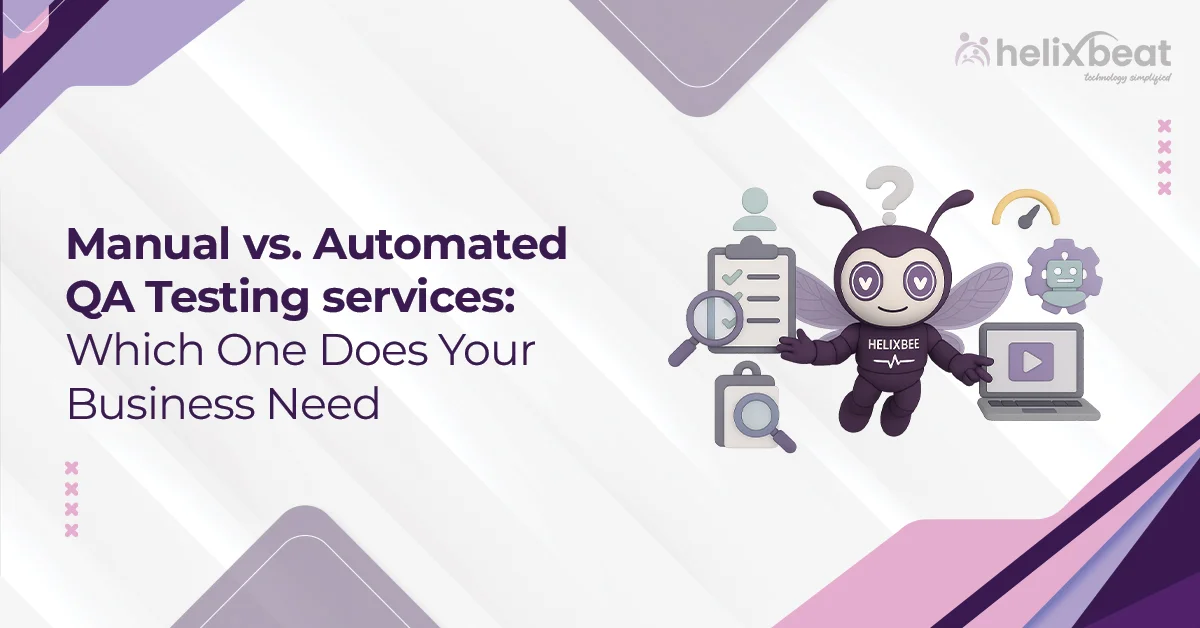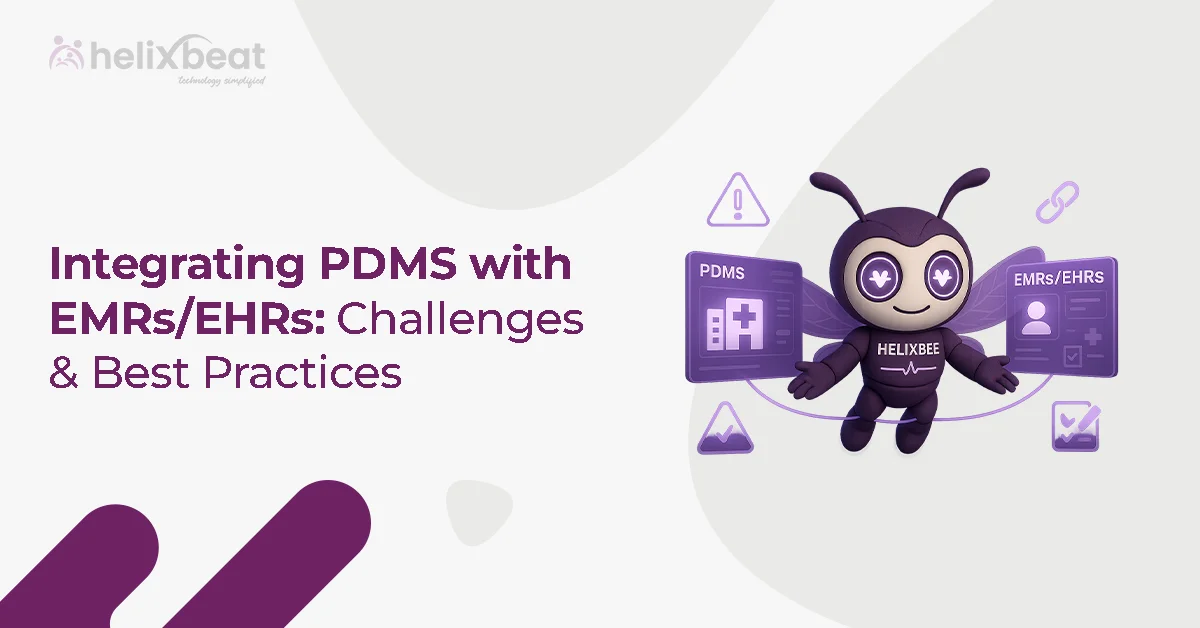Did you know that over 70% of digital transformation projects fail because businesses lack a clear plan or sufficient budget? For many small businesses, going digital can feel confusing, expensive, and out of reach. But it doesn’t have to be that way.
Digital transformation isn’t just for large companies with extensive teams and advanced tools. Even small businesses can go digital in smart, affordable ways and see real results. By utilizing the right tools and implementing small changes, you can save time, work more efficiently, and reach a broader customer base.
The best part? You don’t need to do everything at once. Simple steps, such as using cloud software or learning from data, can set you up for greater success in the future without breaking the bank.
In this blog, we’ll walk you through easy and cost-effective ways to start your digital transformation journey.

Table of Contents
What Is Digital Transformation (and Why It Matters on a Budget)?
Digital transformation refers to leveraging technology to enhance how your business operates, serves customers, manages operations, and makes informed decisions. But it’s not just about buying the latest software. It’s about rethinking how your business operates and making smarter decisions with digital tools.
For example, instead of manually tracking sales in a notebook, a small business can utilize free or low-cost software to track everything in real-time.
Here’s why it matters, especially when you’re on a budget:
- Saves time and money: Automating tasks like billing or stock updates helps small teams do more with less effort.
- Gives better insights: With even basic tools, you can collect data on what products sell best or when your customers are most active. That’s the start of data analytics in digital transformation, and it helps you make smart decisions without wasting money.
- Keeps you competitive: Your bigger competitors may have more resources, but you can still offer fast, modern service by adopting the right digital tools one step at a time.
In short, digital transformation helps you do better business, even if you’re working with a tight budget. It’s not about going big; it’s about starting to get smarter.
Why is Digital Transformation Necessary for Businesses?
Digital transformation isn’t just a trend; it’s becoming essential for survival and growth in today’s fast-changing market. Whether you’re a local shop or a growing enterprise, here’s why using digital tools is no longer optional:
1. Customers Expect Faster, Smarter Service
Today’s customers are used to instant support, online orders, and real-time updates. If your business doesn’t meet these expectations, you risk losing them to competitors who do.
Digital transformation helps you respond quickly, provide self-service options, and stay connected with customers across platforms like email, WhatsApp, or social media.
2. Manual Processes Waste Time and Money
Tasks like handwritten billing, paper records, or repetitive follow-ups slow your team down and create room for errors. By digitizing these processes, even with simple tools, you reduce delays and increase productivity.
For example, automating appointment reminders or inventory tracking saves hours of manual work each week.
3. Data-Driven Growth Is the Future
Without digital transformation, you’re making guesses instead of decisions. With the help of Data Analytics in Digital Transformation, businesses can track what’s working, what’s not, and where to invest next.
This makes your growth smarter and you’re spending more focused, especially important when budgets are tight.
Common Budget Challenges in Digital Transformation
Starting your digital transformation journey on a tight budget can feel like solving a puzzle with missing pieces. Many small businesses face similar roadblocks not because they lack vision, but because they have limited resources. Here are five common budget-related challenges:
1. High Upfront Costs
Many digital tools, especially enterprise-grade ones, come with high setup fees, licenses, or subscription costs that small businesses may struggle to afford.
2. Unclear ROI (Return on Investment)
It’s hard to justify spending money on new tech when the benefits aren’t immediately visible. This makes decision-makers hesitant to invest in digital upgrades.
3. Lack of Skilled Staff
Hiring IT professionals or digital experts isn’t always possible for small teams. Without the right people, even affordable tools may go unused or underused.
4. Tool Overload
Free and low-cost tools are everywhere, but using too many disconnected platforms can lead to confusion, wasted effort, and hidden costs.
5. Data Blind Spots
Without proper planning, businesses miss out on data analytics in digital transformation, meaning they don’t track or use insights that could help them save money and grow smarter.
How to Start Smart: Key Principles for Budget-Friendly Transformation
You don’t need a massive budget to kick off digital transformation. What you need is a smart, focused approach. Here are four key principles that can help you make the most impact with limited resources:
1. Start with One Process, Not the Whole Business
Don’t try to transform everything at once. Choose one area, like inventory tracking, customer support, or invoicing, and improve that first. For example, switching from paper invoices to free billing software can save hours each month and reduce errors. Once you see the results, expand to other areas.
2. Use Freemium and Low-Cost Tools Wisely
There are plenty of tools available that offer free plans for project management (like Trello), CRM (like HubSpot), and accounting tools (like Zoho Books). These let you digitize operations without a heavy investment. Just be sure the tool solves a real need and avoid stacking too many platforms that don’t talk to each other.
3. Build a Data-First Mindset from Day One
Even if you’re small, start collecting data early: sales trends, website traffic, customer feedback. Using data analytics in digital transformation means making decisions based on actual numbers, not guesswork. This helps you focus your budget on strategies that work.
4. Upskill Internally Instead of Hiring Externally
Instead of hiring consultants or external experts immediately, invest in upskilling your team. Free online courses (like Google Digital Garage or Coursera) can teach your team how to use digital tools and understand analytics, keeping costs low and knowledge in-house.
The Role of Data Analytics in Digital Transformation
You don’t need to be a data scientist to understand the value of business data. With the right approach, Data Analytics in Digital Transformation can turn raw numbers into smart actions. Here’s how it plays a powerful role in your digital journey:
1. Turning Data into Clear Business Decisions
Digital tools collect a lot of information such as customer preferences, product performance, website visits, and more. Data analytics helps you make sense of all this. For instance, if data shows that a particular product sells best on weekends, you can run targeted promotions during that time. This kind of insight helps you spend smarter, not more.
2. Finding Hidden Problems Before They Grow
One of the biggest benefits of Data Analytics in Digital Transformation is spotting inefficiencies early. You can identify slow-moving inventory, high return rates, or delays in service. Fixing these small problems in real time saves money and improves customer satisfaction—two things that matter a lot when you’re working on a budget.
3. Personalizing Customer Experiences
Analytics can tell you what your customers like, how they shop, and when they engage. Using that data, you can tailor emails, product recommendations, or even chatbot replies to make interactions more meaningful. This leads to higher loyalty and better sales without needing expensive marketing tools.
Example: Small IT Services Firm Streamlines Client Management with Free CRM
Business Type: 10-person IT services company offering software support and website maintenance
Challenge: Struggling to manage client follow-ups, service requests, and project deadlines across emails and spreadsheets.
What They Did:
The team adopted the free version of HubSpot CRM to manage all client communication, service requests, and deal tracking in one place. For task assignments and internal project timelines, they used Trello (free version). Instead of buying analytics software, they used Google Data Studio to create simple dashboards from form responses and Google Sheets, bringing data analytics in digital transformation to their workflow.
Impact:
The company reduced missed deadlines by 40%, increased client retention, and improved internal coordination, without spending on software licenses. This gave them the confidence to scale and later invest in paid tools as revenue grew.
Final Words:
Digital transformation isn’t about spending more; it’s about working smarter. As you’ve seen, even small steps, such as using free CRM tools and basic data tracking, can improve a business’s productivity. Whether you’re in IT services, retail, or any other industry, starting small doesn’t mean thinking small. With the right strategy and mindset, your business can achieve a big impact with less investment.
Helixbeat helps you to achieve digital transformation with minimal cost.
Our digital transformation services are designed specifically for growing businesses. We help you get started with easy-to-use digital tools and show you how to use data to grow your business without confusing technical terms. Book a free consultation now.
FAQ:
1. What are the five main areas of digital transformation?
The five main areas of digital transformation include customer experience, operational processes, business models, data and analytics, and technology integration. These areas enable businesses to enhance their customer engagement, streamline internal workflows, explore new revenue opportunities, make data-driven decisions, and select the appropriate digital tools to support growth.
2. What are the four pillars of digital transformation?
The four key pillars of digital transformation are people, processes, technology, and data. People refer to the need for digital skills and a transformation mindset. Processes must be reimagined for speed and efficiency. Technology provides the tools needed for change, while data helps drive smarter decisions and better customer engagement.
3. What is the role of digital transformation?
Digital transformation enables businesses to enhance their operations, customer service, and competitiveness. It enables automation, better decision-making, and faster adaptation to market changes, even for small businesses on tight budgets.
4. What is an example of a digital transformation?
A small IT company utilizing free CRM and project tracking tools, such as HubSpot and Trello, to manage clients and deadlines more efficiently is a real-world example. It reduces manual errors and improves service delivery without needing expensive systems.
5. Short note on Data Analytics in Digital Transformation
Data Analytics in Digital Transformation refers to the process of collecting and analyzing data to improve decision-making, customer understanding, and operational efficiency. Even small businesses can utilize basic tools to track sales trends, customer behavior, or service issues, turning insights into action with minimal investment.














